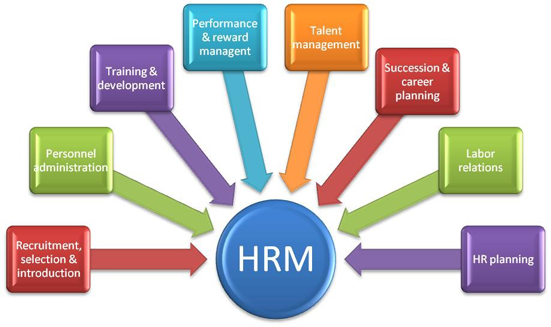Managing Human Resources in IT, and Change Management- Professional practices in IT

Human resource management (HRM) is a very important art and science of managing employees in any Australian IT organization. This is also thought of a procedure which adopts a very constructive, structured and thorough approach in managing employees in an organization. This is a vast field which covers the processes of recruiting people, retention of employees, deciding and managing their pay and perks, monitoring and managing performance, check any violation of company’s ethical policies, effectively managing the additions and deletions in the number of human resources and performing the exit formalities and ensuring the completion of assigned tasks to an employee when he decides to leave the organization. Amongst all the roles of human resource department, the first and foremost role is to manage employee relationships in the best way. This fact was verified by the human resource experts of ExpertAssignmentHelp.
Human Resource Management or HRM aims at valuing and building people at the workplace and for any one seeking some help with human resource assignment help or leadership assignment help their task comprises of understanding the nuances of.
- Staffing and selection
- Effective and open communication with each and every employee of the organization
- Create better engagement among employees to maximize employee retention
- To enable them with various training programs to boost technical and soft skills of an employee
- To help them develop their leadership skills
Nothing is permanent here. Everything is experiencing change and so is human resource in any organization. Change has always there and will continue to be observed in every organization. There is always an increase and decrease in the number of employees in an organization due to various reasons, but one needs to manage this change very effectively. How does this job to manage changes in the organization? Yes, it is the Human Resource Department. You can’t return to the good old days.
An employee has to keep working on his skills and to deliver in accordance with the increasing job expectation of the clients. The advancement of technology and over the demanding nature of the client has led them to a platform where they have to outperform their skills in order to retain their position in the organization. Accomplishing more jobs with fewer resources needs changes at various levels: –
- Redefining roles and responsibilities of employees,
- Making amendments in systems and
- Refining the level of customer service.
Employees are expected to make quick decisions and respond quickly within the deadlines to match up with the increasing demands of customers and to make the workplace more flexible than ever.
In this rapid change of work environment in Australia, change management skills hold large significance for those who have a vision to succeed. Irrespective of the job, one must learn how to deal with change and manage it effectively. It does not matter whether you welcome change or stay far from it for an enriching and fulfilling job, you should be equipped with the capabilities to manage and take charge of change. Change management is the procedure of assisting employees and an organization to move from the present state to the desired state. When observing the goal of the change management processes in any Australian IT organizations, you will notice high amounts of reduction of the distraction that an organization experiences when it transits from the present state to the desired state. These distractions can be the over-reaction or resistance of employees towards change, change in day-to-day priorities, changes in the vision of an organization that create an impact on the ambitions and goals of employees, and spending valuable time and resources on planning lower priority goals.
Change Management procedure makes use of methods, tools, skills and best professional practices in the IT Industry:
- Executive leadership and support
- Communication
- Employee Engagement
- Formulation of plans and effective analysis
- Development of support using sound preparation
Various types of Change to Manage
Some change initiatives are wide, concerning the whole organization while others are small, confined to department, employee and personal level. As a result, you must be sensing the requirement to address and manage these changes in in the most appropriate way.
- Change in the organization’s mission or vision depending on the market trend.
- Changes in consumer’s expectations and needs based on the comparison between available competitor products.
- Changing needs of an employee with respect to generation difference, amendment in employment regulations, competitor attractive policies, and varying needs and expectations of an employee from his/her job.
- Change in the managerial committee with the appointment of a new board member as a result of which the priorities sometimes get changed due to difference in opinions.
- In case of job promotion wherein one has to understand the working, roles and responsibilities of the new job.

This change management process can be as wide as the organization can involve each and every employee of the organization or limit it to a department, team or an employee. When a large number of people are involved in the process it would definitely require a large amount of time, resources, energy, and commitment. Thus, effective skills in change management assist an organization to navigate the journey smoothly and hassle free.


